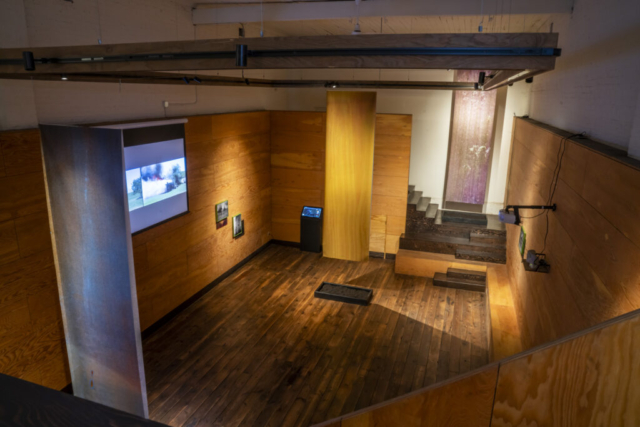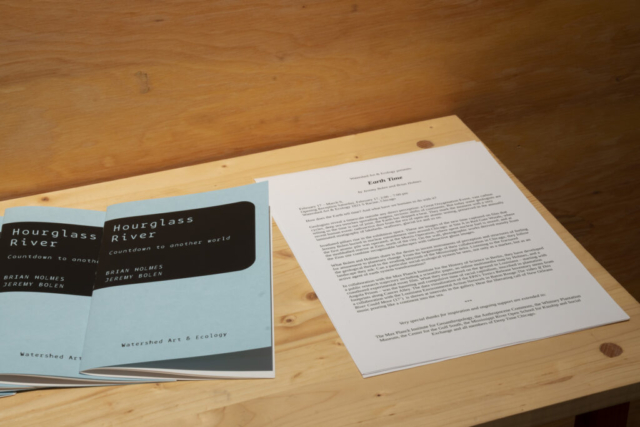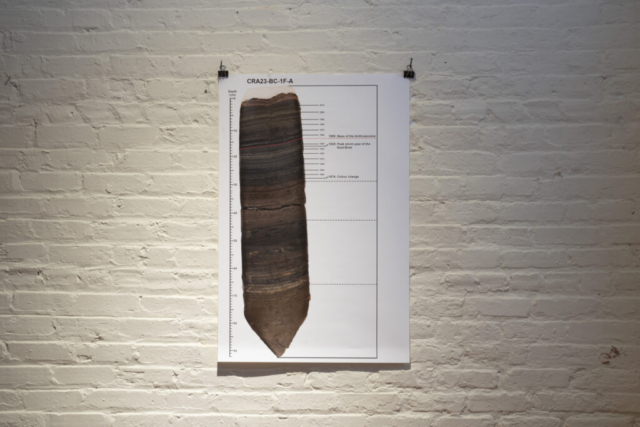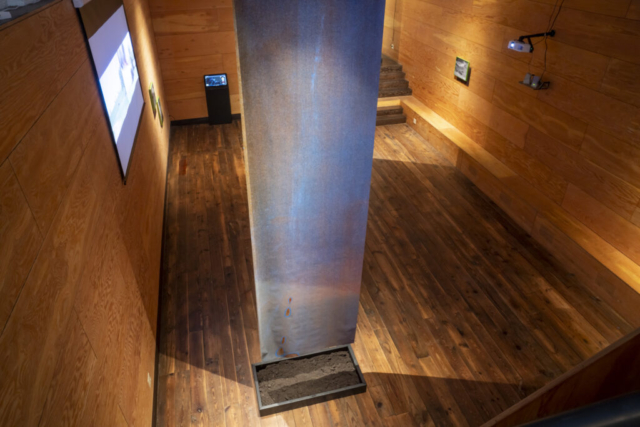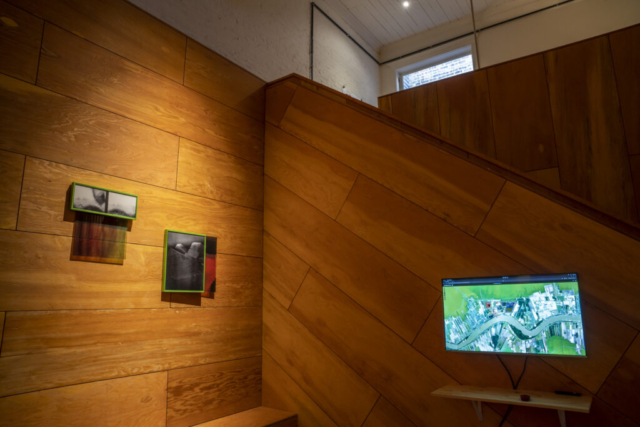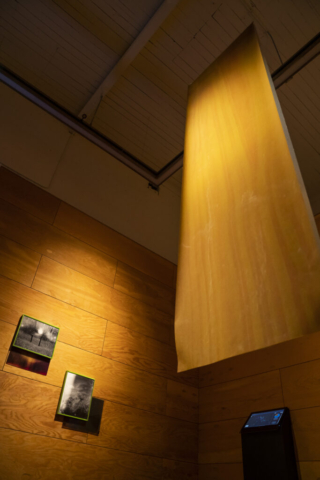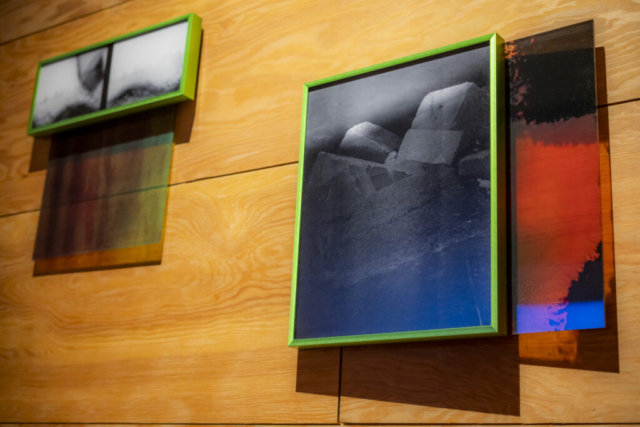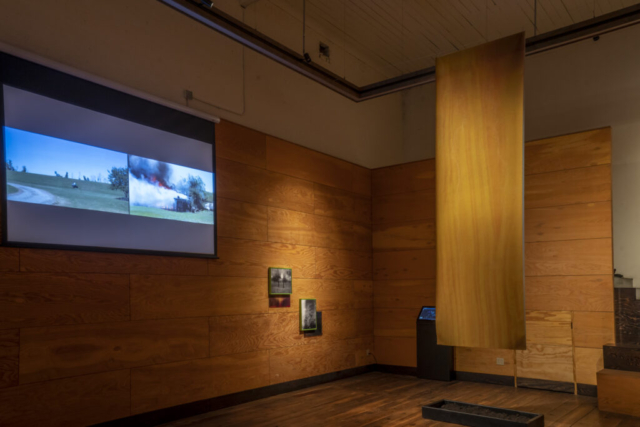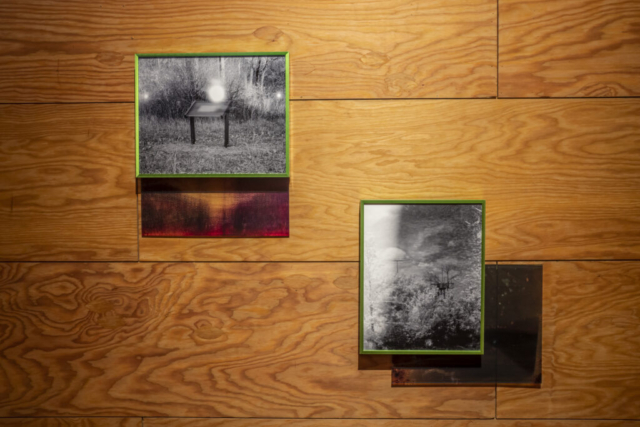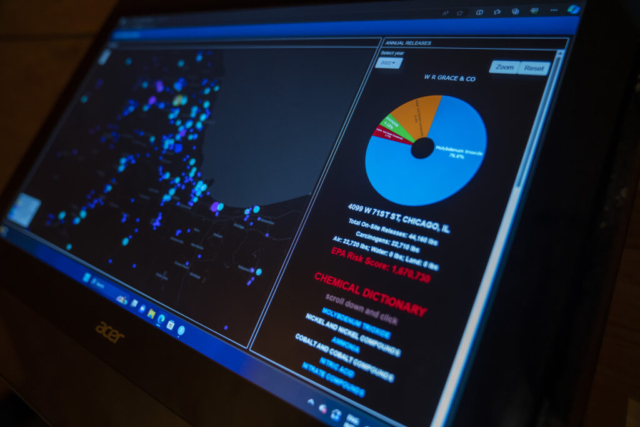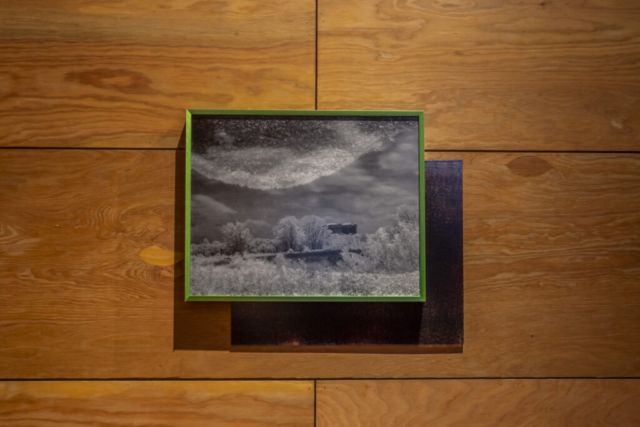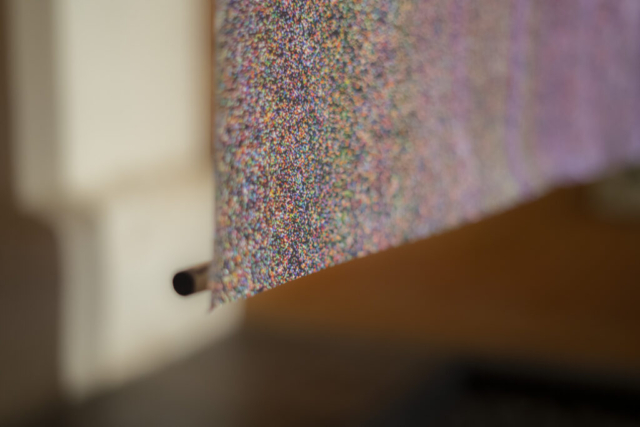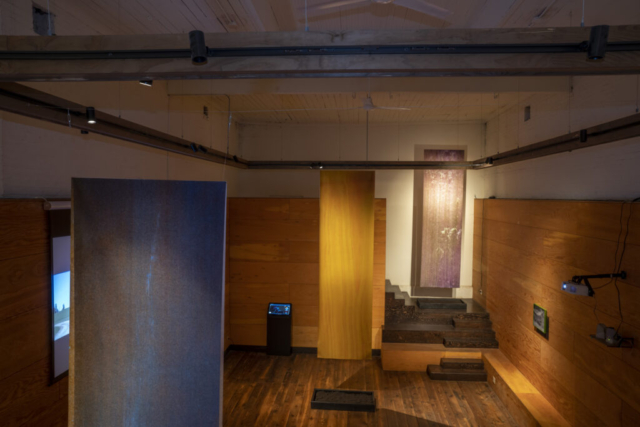
Watershed Art & Ecology presents:
EARTH TIME
How does the Earth tell time? And what do we humans have to do with it?
Geologists reveal a timescale outside any direct perception: a Great Oxygenation Event, vast carbon cycles, deep sea trenches spreading magma, tectonic shifts of continents. But today some geologists are telling us the time is out of joint, Earth has skipped a beat. They mark the moment with a very recent human event: radioactive dust from the era of open-air atomic testing, preserved in the annually laminated stratigraphy of lakebeds, seafloors, glacial ice and so on.
Irradiated pillars rise in the exhibition space. These are images of the new time captured on film that Jeremy Bolen buried in nuclear entombment sites around Chicago: at Site A in Red Gate Woods, where the first atomic pile was set up during World War II; at the Morris Operation, where spent nuclear fuel is stored; and at the mothballed reactor in Zion, north of the city. On the wall, photographic works derived mainly from the Zion site combine recognizable landscapes with radioactive ghost images.
What Bolen and Holmes share is the desire to invent instruments of perception and structures of feeling for attunement to planetary change. From the beginnings of their collaboration in Chicago they follow the geological thread to the eroding labyrinth of the Mississippi delta. Listening to the fractured landscape they ask: Can a particular social-ecological system be seen, not only as a marker, but as an active agent of earth system transformation?
In collaboration with the Max Planck Institute for the History of Science in Berlin, they developed a public research trajectory including a scientific paper, an online multimedia map by Holmes, and a coauthored experimental essay film. What they encountered on the ground in Louisiana – starting with Angola Prison – was the haunting and compulsive time of racial capitalism, inscribed in plantation footprints along Cancer Alley. The data visualization of the EPA’s Toxics Release Inventory stems from a collaboration with the Louisiana Environmental Action Network in Baton Rouge. The co-authored video If This River Could Move (17’) is shown at intervals in the gallery. Hear the liberating call of New Orleans music pouring like a continent into the sea.
Map by Brian Holmes, https://hourglass.rivertoday.org
BIOS
Jeremy Bolen
Jeremy Bolen is an artist, researcher, organizer, filmmaker and educator interested in site specific, experimental modes of documentation and presentation. His work has been exhibited internationally at numerous locations including Haus der Kulturen der Welt, Berlin; the Museum of Contemporary Photography, Chicago; Origins Centre Museum, Johannesburg; Museum of Contemporary Art, Georgia; La Box, Bourges; PACT Zollverein, Essen; EXGIRLFRIEND, Berlin; POOL, Johannesburg; University at Buffalo, Buffalo; IDEA Space, Colorado Springs; The Mission, Houston; Galerie Zürcher, Paris; Andrew Rafacz, Chicago; Soccer Club Club, Chicago; Salon Zürcher, New York; The Drake, Toronto; Untitled Art Fair, Miami; Gallery 400, Chicago; Newspace Center for Photography, Portland; Depaul University Art Museum, Chicago and Hyde Park Art Center, Chicago. Additionally his films have been screened at many venues including — Haus der Kulturen der Welt, Berlin; Antimatter (Media Art), Vancouver; Lima Alterna International Film Festival, Lima; and Bideodromo International Film Festival, Bilbao. Bolen lives and works in Atlanta, serves as Assistant Professor of Photography at Georgia State University.
Brian Holmes
Brian Holmes is a polyglot essayist, artist and researcher, focusing on political ecology. He lived in Paris from 1990 to 2009, where he worked with artist-activist groups, served as translator and English editor of Documenta X publications and was on the editorial board of the journal Multitudes, while publishing across Europe and the world, in edited books, museum catalogues, radical journals, tracts, websites, etc. Upon returning to the United States he took up online cartography as a visual research practice and began working closely with the environmental art group Casa Río in Argentina. In Chicago he has been a member of the Compass group and more recently of Deep Time Chicago. With the latter group he has engaged in extensive collaborations with the Max Planck Institute for the History of Science (now Geoanthropology) and the Haus der Kulturen der Welt’s Anthropocene Curriculum program (now Anthropocene Commons). Brian’s cartographic work has been exhibited at the Museum of Contemporary Photography and at Gallery 400, both in Chicago; at Southern Illinois University in Carbondale, Illinois; at Artists’ Alliance in New York; at the Pacific Northwest College of Art in Portland, Oregon; at Centro Cultural Parque de España in Rosario, Argentina; and at Antenna in New Orleans.

